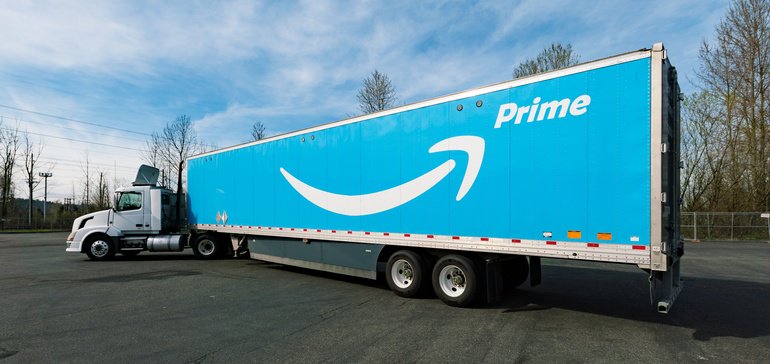Dive Brief:
- Amazon is poised to launch a shipping service, “Shipping with Amazon” or “SWA,” that would challenge FedEx, United Parcel Service, DHL and other players, the Wall Street Journal reported Friday. The new service will start out in Los Angeles “in coming weeks,” delivering for sellers on Amazon’s marketplace but slated to expand almost immediately, according to the report.
- The expansion will also entail offering the service to other businesses — a source of consternation for investors in FedEx and UPS, which sent shares down Friday morning — and Amazon plans on undercutting those shippers on price, the Journal reports. Amazon responded to Retail Dive’s request for comment or confirmation with an emailed statement: “We’re always innovating and experimenting on behalf of customers and the businesses that sell and grow on Amazon to create faster lower-cost delivery choices.”
- Amazon already delivers to at least 37 U.S. cities, the Wall Street Journal notes. Shipments outside Amazon’s reach, which aren’t likely to include more far-flung areas, according to a note from GlobalData Retail Managing Director Neil Saunders, will be handled by the U.S. Postal Service and other shippers, according to the Journal report.
Dive Insight:
For years now, speculation about Amazon’s delivery ambitions have swirled, with some analysts predicting that, beyond solving its own internal logistics problems, it could be an Amazon business unto itself. Bypassing third-party shippers like UPS and FedEx could save Amazon $1.1 billion annually, Citigroup analysts said in 2016. That translates to savings of $3 or more on a typical delivery, which now costs $7.81 on average. Amazon’s shipping and fulfillment costs until its most recent quarter grew faster than its revenue, but so far the company has focused on making moves to optimize those operations.
Those efforts include an Uber-like crowdsourced ground delivery network it calls Amazon Flex, the purchase of thousands of semitrailers and, of course, drones. Two years ago, the company unveiled its first Prime Air-branded cargo aircraft in an inaugural flight during Seattle’s annual Seafair Air Show.
FedEx has consistently dismissed the notion that Amazon is a threat to its business, and executives have noted that, even if Amazon develops its own delivery service, outside shippers would have plenty of business, even in retail. Others have concurred: “We believe it is likely Amazon will make a concerted effort to take over ever larger portions of its supply chain,” RBC Capital Markets analyst Mark Mahoney said last year. “However, a full-blown Amazon parcel delivery operation would likely take years to complete, so we believe [FedEx] and UPS would have time to react.”
But other experts have told Retail Dive that Amazon’s shipping services could indeed rise, much like its cloud services have, to serve third parties. While Amazon built its Amazon Web Services unit to serve its own needs at first, it developed the platform with the idea of providing services to outside parties. Entities from Netflix and the U.S. Central Intelligence Service now employ those services.
“There is nothing to preclude the service being extended, and Amazon has said it is open to eventually making deliveries for other businesses,” Saunders said in an email to Retail Dive, noting that it could be brutal for legacy shippers.
The danger to them is twofold, he said. First, they are likely to lose business from Amazon itself. “This will be slow at first but will accelerate as Amazon rolls out more of its own delivery services,” he said. Second, if Amazon does offer delivery to businesses, it will likely do so at reduced rates. “This leaves delivery firms with the unattractive prospect of losing share in their most lucrative and profitable markets, while at the same time having to offer a national service with all the expense of delivering to rural locations,” Saunders warned.
The news solidifies Amazon’s stance as an ambitious company willing to create a wide-ranging set of operations that serve consumers while optimizing efficiencies and extending its reach. “Ultimately, this will give Amazon more power, control, flexibility, and profit,” Saunders said.


